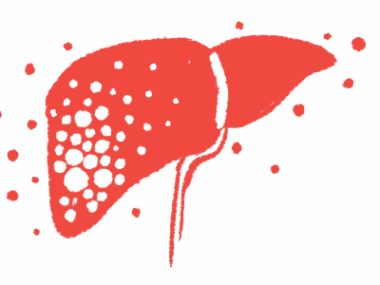Therapy to silence SPTBN1 protein eases liver fat, scarring in mice
Early lab studies support potential of BF-114 in treating MASH, MASLD
Written by |

Suppressing the production of the SPTBN1 protein reduces liver fat, inflammation, and scarring (fibrosis) in mouse and human models of two forms of fatty liver disease, a new study reports.
The findings lend support to BF-114, Bullfrog AI’s experimental SPTBN1-targeting molecule, as a potential therapy for metabolic dysfunction-associated steatotic liver disease (MASLD) and metabolic dysfunction-associated steatohepatitis (MASH).
“This research strengthens the scientific foundation for BF-114 and its potential role in addressing complex liver diseases,” Vin Singh, CEO of Bullfrog AI, said in a company press release. It also “offers compelling evidence that our approach could change the treatment landscape for these metabolic disorders.”
The study, “Aldehydes alter [TGF-beta] signaling and induce obesity and cancer,” was published in Cell Reports.
SPTBN1 protein involved in processes affecting liver inflammation, fibrosis
MASLD is a form of fatty liver disease marked by the buildup of fat in the liver in people who have metabolic complications like obesity or diabetes. Left unchecked, MASLD can progress to MASH, which is marked by liver inflammation and fibrosis that can set the stage for liver cancer.
MASLD was previously known as nonalcoholic fatty liver disease or NAFLD, and MASH was formerly called nonalcoholic steatohepatitis or NASH.
Molecular processes that control inflammation and fibrosis in the liver during MASLD and MASH are complex and incompletely understood, but one of the most important regulators of these processes is the TGF-beta signaling pathway. This molecular pathway helps regulate the growth and activity of cells, and it’s been shown to play a key role in the development of many cancers.
The SPTBN1 protein is a key player in the TGF-beta signaling pathway, and when partially suppressed in mice, it leads to the spontaneous development of severe fatty liver disease and hepatocellular carcinoma, the most common type of liver cancer.
In the study, researchers genetically engineered mice to have lower than normal SPTBN1 levels and no production of ALDH2, an enzyme that breaks down aldehydes, byproducts of normal cell activity that can damage in the liver. Lack of ALDH2 in mice has been shown to increase susceptibility to liver damage, fibrosis, and cancer.
They found that these mice developed MASLD and MASH on a normal diet due to changes in fat metabolism in the liver. Further experiments showed that when aldehyde levels are elevated, SPTBN1’s activity becomes disrupted — which, in turn, causes the abnormal TGF-beta signaling that ultimately drives inflammation, fibrosis, and cancerous cellular changes.
Given that targeting SPTBN1 has been shown to be effective at treating diet-induced MASH and limiting the severity of hepatocellular carcinoma, the team then analyzed the effects of blocking SPTBN1 in models of MASLD and MASH.
Targeting SPTBN1 in mice halted fibrosis progression and fat buildup
One way taken to block SPTBN1 was through the use of a small interfering RNA (siRNA) molecule designed to bind to the SPTBN1 gene’s messenger RNA (mRNA), an intermediate molecule generated from DNA that guides protein production. This binding targets the mRNA for destruction, ultimately preventing production of the SPTBN1 protein.
Treatment with SPTBN1-targeting siRNA reduced liver fat, inflammation, and fibrosis in mice lacking ALDH2 and a lab-grown human model of MASH, the researchers reported.
“Targeting SPTBN1 in mouse models of obesity and MASH … significantly halted progression of MASH fibrosis, lipid accumulation, and tissue damage in the liver,” the scientists wrote, adding that these data “indicate that SPTBN1 is a potential target for treating … MASLD and MASH.”
Given that BF-114 is a siRNA molecule designed to target SPTBN1, these findings support the therapy’s potential for these forms of fatty liver disease.
“The combination of Bullfrog AI’s approach to drug development and the promising results we’ve seen with BF-114 provides a strong foundation for the continued exploration of its potential in treating obesity and liver diseases,” said Lopa Mishra, MD, the study’s senior author at Cold Spring Harbor Laboratory, who will be joining Bullfrog AI’s scientific advisory board.
“I am excited to join Bullfrog AI’s Scientific Advisory Board and continue our work in targeting SPTBN1,” Mishra said. “I look forward to contributing to the advancement of BF-114 and exploring its multiple therapeutic possibilities.”







